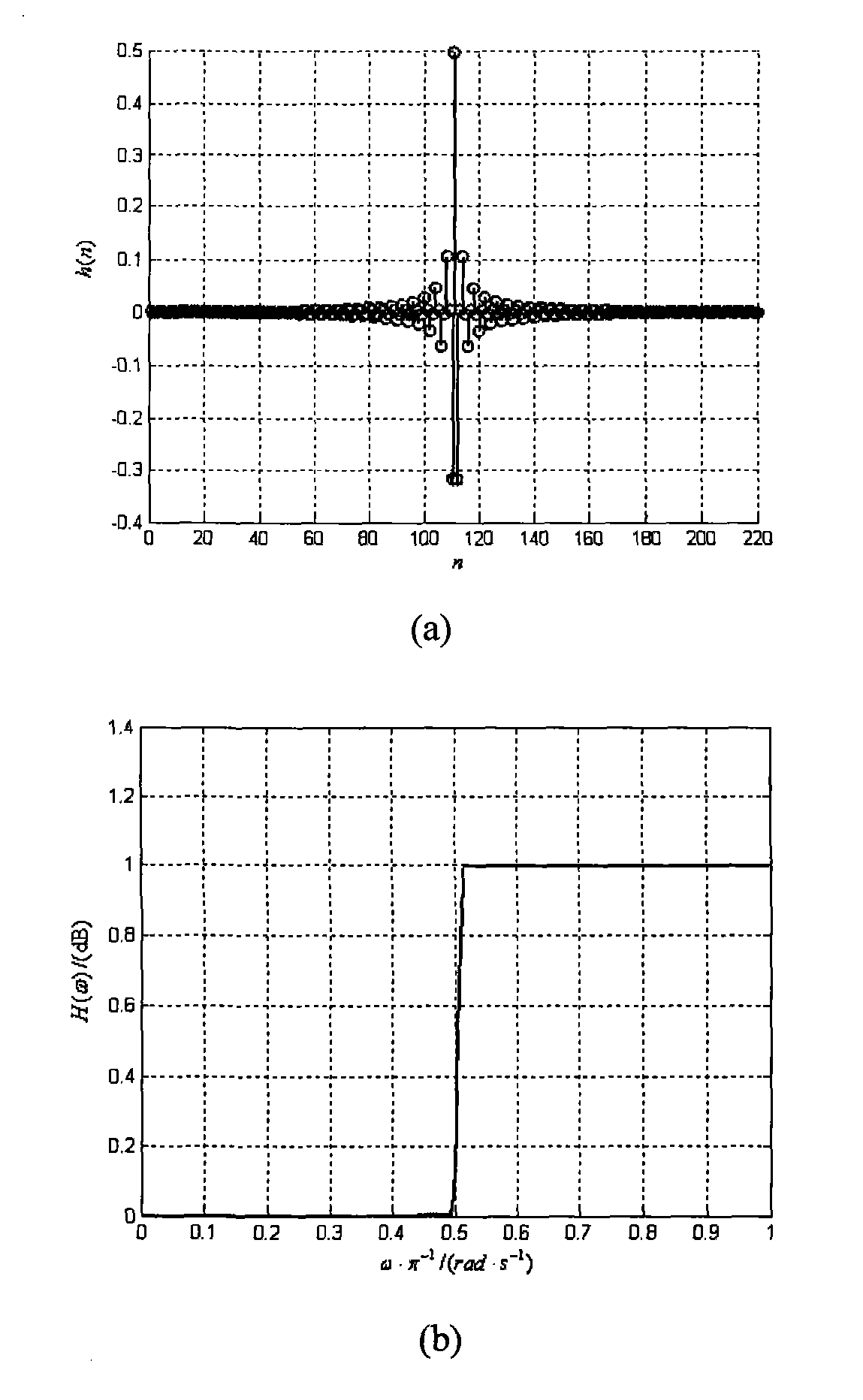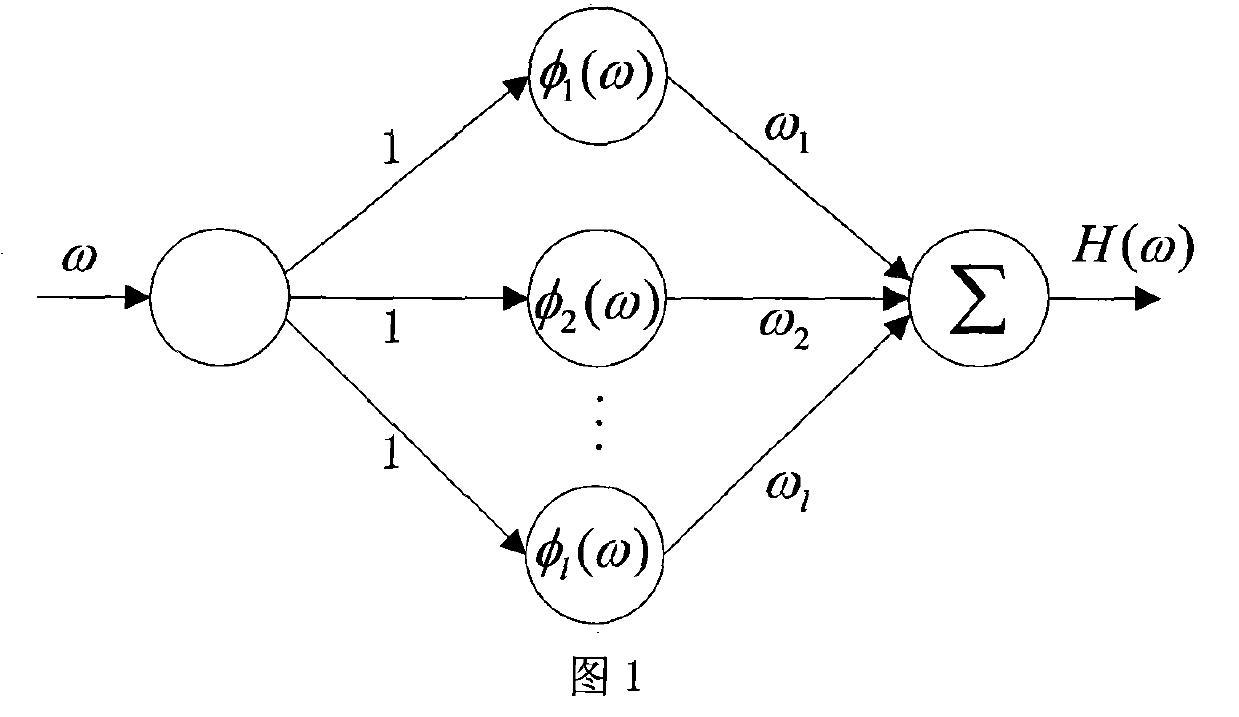Design method for FIR filter based on learning rate changing neural net
A technology of neural network and design method, applied in the field of electronic science and communication, which can solve problems such as slow convergence speed
- Summary
- Abstract
- Description
- Claims
- Application Information
AI Technical Summary
Problems solved by technology
Method used
Image
Examples
Embodiment 1
[0084] Embodiment 1 assumes that the amplitude-frequency characteristic of a certain ideal high-pass filter is:
[0085]
[0086] The method of designing a 220-order high-pass filter is: uniformly take 111 sample values for ω in [0, π], that is ω = π 110 n , n = 0,1,2 , · · · , 110 . In order to make the passband and stopband of the filter have no overshoot and ripple, two sample points 0.2 and 0.8 are taken in each transition band respectively. Therefore, the actual amplitude-frequency sampling sequence is: H o (n) = [zeros (1, 55), 0.2, 0.8, ones (1, 54)]. Take the network structure of the neural network as 1×111×1, and the global error performance index in the passband and stopband range is J=4.62×10 -6 , the initial value of the α learning rate is 0.001, and the sampling sequence is input into the neural ...
Embodiment 2
[0090] Embodiment 2 assumes that the amplitude-frequency characteristic of a certain ideal bandpass filter is:
[0091]
[0092] The method of designing a 180-order band-pass filter is: take 91 sample values evenly in [0, π] for ω, that is ω = π 90 n , n = 0,1,2 , · · · , 90 . In order to make the passband and stopband of the filter have no overshoot and ripple, two sample points 0.2 and 0.8 are taken in each transition band respectively. Therefore, the actual amplitude-frequency sampling sequence is: H o (n)=[zeros(1, 28), 0.2, 0.8, ones(1, 31), 0.8, 0.2, zeros(1, 28)]. Take the network structure of the neural network as 1×91×1, and the global error performance index in the passband and stopband range is J=5.64×10 -7 , the initial value of the α learning rate is 0.001, and the sampling sequence is input into...
PUM
 Login to View More
Login to View More Abstract
Description
Claims
Application Information
 Login to View More
Login to View More - R&D
- Intellectual Property
- Life Sciences
- Materials
- Tech Scout
- Unparalleled Data Quality
- Higher Quality Content
- 60% Fewer Hallucinations
Browse by: Latest US Patents, China's latest patents, Technical Efficacy Thesaurus, Application Domain, Technology Topic, Popular Technical Reports.
© 2025 PatSnap. All rights reserved.Legal|Privacy policy|Modern Slavery Act Transparency Statement|Sitemap|About US| Contact US: help@patsnap.com



